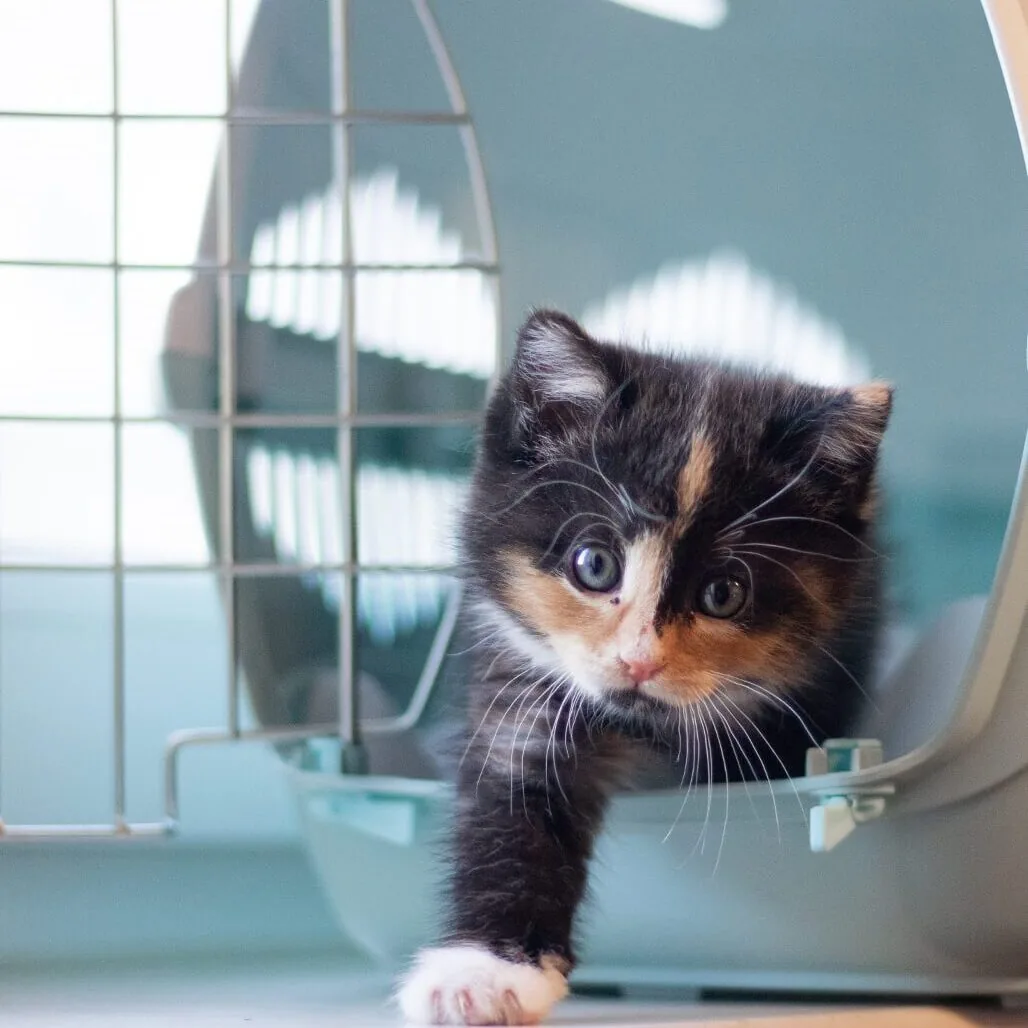- Keep a record of your pet’s vaccinations and medical history. This includes having them on your phone and having printed copies. You can do this by downloading our app and going to your pet portal. If you need to take your pet to a shelter or boarding facility, they’ll likely require your pet’s recent paperwork.
- Have current photos of your pet on hand in case they do get lost.
- Make sure they are wearing a collar that has all their current identification information. You should also have your pet microchipped so if they do run off, any shelter or animal hospital that receives them will be able to scan their chip and trace them back to you. Make sure that if your pet is microchipped, their chip number is registered with your current contact information (including address).
- Put together an emergency supply kit with the following items: pet carrier or crate, ID, immunization records, medication, supply of food and water, collar or muzzle, a leash, puppy pads, plastic bags, or a litter box for your cat.
- If you decide to weather the storm, bring your pets inside well before the storm hits and keep them calm by not panicking yourself. Use a calm voice and gentle actions to handle them.
- If you’re staying home with your pet, make sure to stock up on bottled water and food for both you and your pet. You never know when you might need it!
- During the storm, keep your pet in a crate, carrier, or on a leash. You never know how they may react, or if you’ll have to evacuate in the midst of it.
- In the case of an evacuation, once you return, your surroundings are likely to have changed. This new environment may confuse your pet, so keep them on a leash until they become re-oriented with their surroundings.
We've upgraded our online store!
Ordering your pet's favorite food and medicine is now easier than ever.
Order Food & Meds
Quick & Easy Registration

Please use the phone number and email you currently use for hospital communications to link your account!
Linked Pet Records & Rx

Your pet's prescriptions and records will be waiting for you!
Pawsome
Savings!

AutoShip discounts, promotions on your favorite products and more!

 Educational Links for Hurricane Safety
Educational Links for Hurricane Safety
